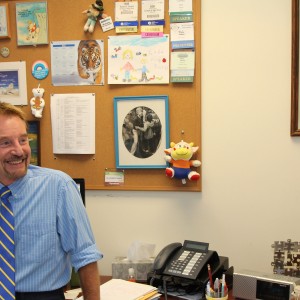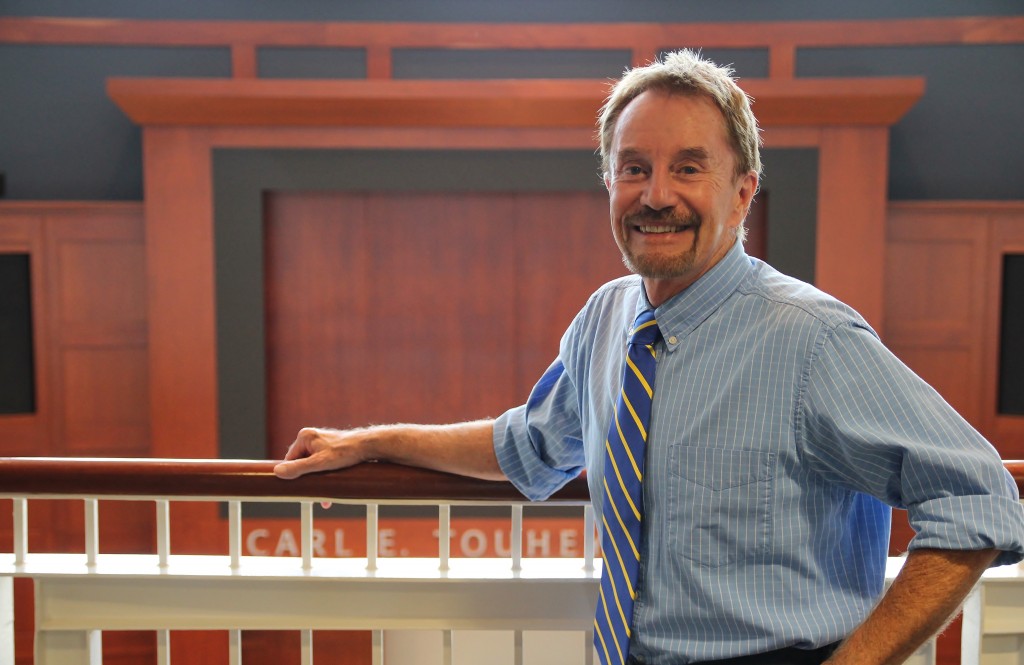Saint Rose Speech Pathology Professor Nets Top National Honor
October 5, 2015 · 2015

Getting Children to Talk
Anyone who knows children knows that a sure-fire way not to get information is to ask them something they can answer “yes” or “no.”
And yet, notes Professor Robert Owens, it is precisely these conversation-halting questions that speech-language pathologists (SLPs) — like the rest of us — tend to ask. It is an approach that is not particularly effective in determining whether a young person has a language disorder.
“If you want to get a child to talk, you don’t ask ‘did you have fun?’ but ‘tell me about it?’ You have a conversation,” says Owens, whose office in the Lally School of Education is filled with children’s drawings addressed to “Dr. Bob.” “The current methods come from the ’70s. We need to change the way we talk to children so we get better responses.”
A widely published author and speaker, Owens says there are a number of practices that need to change in order to secure an earlier and more accurate picture of language disorders in infants and preschoolers. He is pushing on several fronts as he teaches the next generation of SLPs studying in the College’s renowned communication sciences and disorders program.
Working on his own and with colleagues at Saint Rose and elsewhere, Owens is changing the methods by which these specialists evaluate early childhood language. Owens also is collaborating on a new website that will enable clinicians to collect a useful language sample in minutes. The stakes are high: the ability to detect autism or developmental disabilities ahead of the most obvious signs.
“We’re going to turn this whole thing on its head,” he said, exhibiting a manner that is at once impatient and upbeat. “We are inventing a new normal, and pushing the limits of what kids are capable of doing with their language.”
Now, Owens’ scholarship, his writing and insistence on replacing outdated practices have earned him the top honor of the American Speech-Language-Hearing Association (ASHA.)
The Honor of the Association recognizes the small percent of the 150,000 ASHA members who have enhanced or altered the field of communication sciences and disorders. 
Owens, who has written five books in the field, is one of 20 recipients of the 2015 award that will be conferred November 12 at the annual convention, held in Denver. He also has been chosen to present a Trailblazer session, reserved for the most forward-thinking work. Owens titles his session “Bye-Bye Roger: Rethinking Dr. Brown’s Language Sample Collection and Analysis.” It is a reference to a forerunner’s method of collecting language samples that Owens says is inadequate.
Instead, he will propose his own approach to get children, even those forming their first words, to provide information that accurately reflects their abilities. Another goal: give SLPs more convenient methodology.
It turns out that not only is the approach – relying on “yes” and “no” questions – stilted, but the recognized method of analyzing the language samples is so cumbersome that few school-based SLPs actually take the time. Owens knows this because he, along with colleagues at James Madison University and the Virginia Department of Education, did a survey of school-based SLPs.
“We got 1,300 responses,” he said. “And results indicate that they sampled infrequently, preferring to rely on standardized testing because the sampling could be so time consuming, and very technical.”
In response, Owens, along with a colleague at James Madison University and his Saint Rose graduate assistant Zhaleh Lavasani, is devising a new web-based alternative that takes advantage of such simple tools as the “word count” prompt on the tool bar of most PCs.
This simpler, digital analysis, along with better language sampling, Owens believes, will help practitioners detect disorders in children as young as 30 months.
He hopes his website is ready by the end of 2016. Its acceptance will depend on peer-reviewed journal articles and its use in the field. And if all goes well, he will follow the “Bye-Bye Roger” session with a 2016 workshop titled “The New Normal” discussing a new method he calls SUGAR – for Sampling Utterances and Grammatical Analysis Revised. He said it’s a process that can be done in less than 30 minutes.
“What professors teach most and SLPS do least is a language sampling,” Owens explained. “My job is to help them fall in love with an assessment method that is valid and ecologically sound.”
Read more about the communication sciences and disorders program

